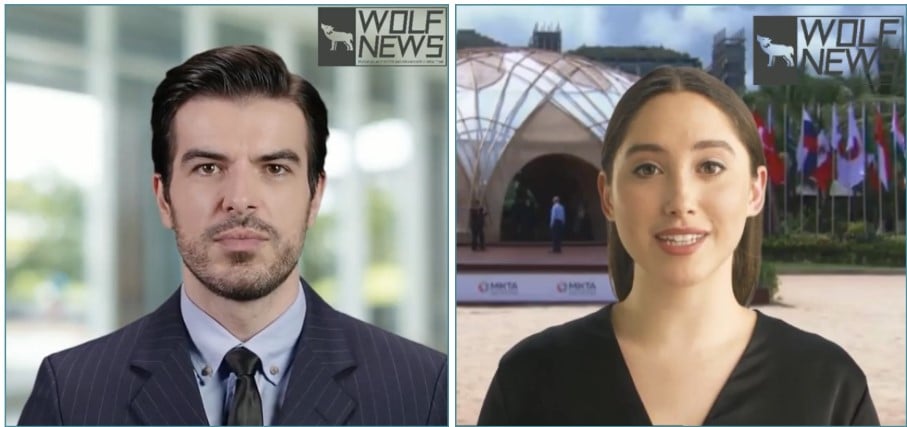New York-based research firm Graphika claims China uses artificial intelligence-generated deepfake news anchors to spread political propaganda on social media.
In a study entitled ‘Deepfake It Till You Make It,’ the US-based firm alleged that Spamouflage, an influence operation connected to the Chinese government, has been promoting China’s role in global politics using fictional AI-generated news anchors.
This has been ongoing since late 2022, with several videos spreading disinformation about the US, according to the study. The Spamouflage project has been around for a while, using fake social media accounts to praise China while criticizing other matters not supported by the Chinese government, such as Taiwan’s independence.
How China’s deepfake works
The pro-Chinese propaganda project has added deepfake to its arsenal with videos showing two Caucasian-looking news anchors. The videos look like regular snippets from news broadcasts.
There is even a logo for the media company Wolf News, which most likely doesn’t exist. In the videos, the male anchor criticized the US for its failure to tackle gun violence, while the female discussed the global economic need for China-US cooperation.

On the face of it, the characters in the videos look real. “Our initial hypothesis was that they were paid actors that had been recruited to appear in the videos,” the report said.
But Graphika noted that the videos had many similarities with Spamouflage’s earlier efforts – hence the conclusion that they are deepfakes. Closer examination revealed grammatical mistakes in the subtitle and a slight variance in the robotic speech and lip sync.
Meanwhile, the team claimed that technology from AI video creation platform Synthesia was likely used to create the deepfake. There were several other marketing videos on the internet using the same characters where they spoke other languages under different names.
With Synthesia costing as low as $30 per month, the technology and others like it offer an efficient, high-speed, and cheap way to create convincing deepfake content. This is a significant issue in a world where disinformation is spreading at an alarming rate and becoming harder to detect.
China has been experimenting with AI anchors for some time, going back to 2018 when state news agency Xinhua revealed the world’s first AI news anchor. At the time, Xinhua claimed that the technology would improve efficiency and reduce the cost of news production.
The dangers of deepfake
But the potential for abuse is high, and it is already evident. Apart from using such deepfakes to spread misinformation, there are more dangerous uses, such as deepfake porn and scams. In the hands of criminals, these generative AI technologies have become tools for fraud.
The improvements in deepfake technology have made it difficult to detect when content is deepfake or AI-generated. Meanwhile, the laws as they currently stand are inadequate to prevent potential risks and protect consumers effectively.









 and then
and then